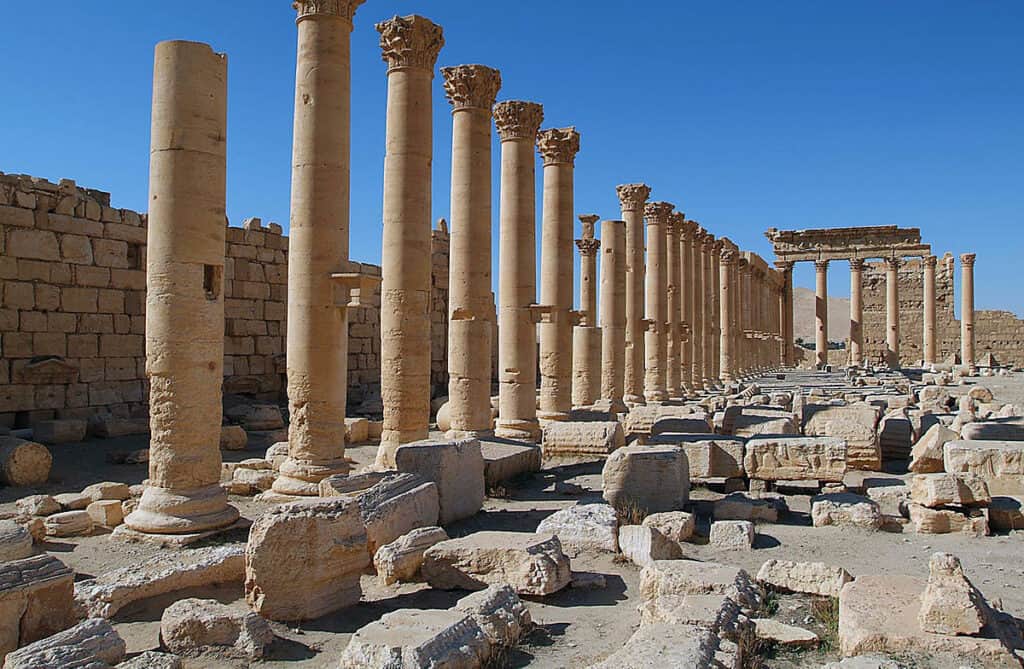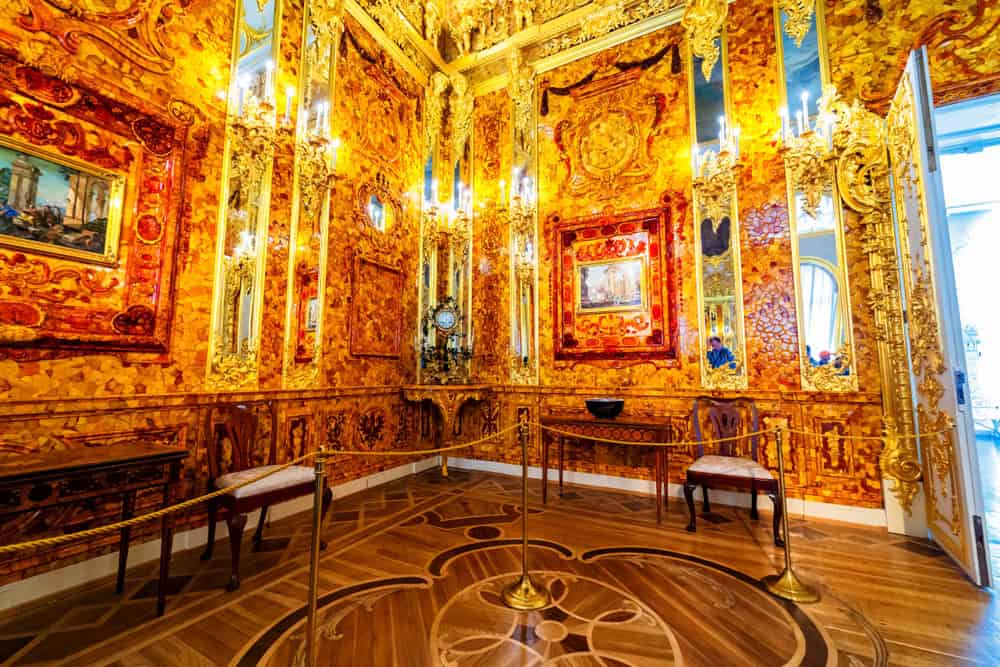Throughout history, humanity has created incredible monuments that stood as symbols of culture, achievement, and artistry. Sadly, many of these iconic structures have been lost over time due to natural disasters, war, or neglect. Their destruction not only erased physical landmarks but also diminished the cultural legacy they represented. Despite their loss, these continue to inspire awe and fascination, reminding us of the importance of preserving history. Here, we explore some of the most remarkable historic monuments that have been destroyed or lost, each with a story that echoes through time.
The Buddhas of Bamiyan

Carved into the cliffs of the Bamiyan Valley in central Afghanistan during the 6th century, the Buddhas of Bamiyan stood as towering representations of the region’s Buddhist heritage. The larger of the two statues measured approximately 55 meters, while the smaller stood at 38 meters. In March 2001, the Taliban, deeming the statues idolatrous, orchestrated their destruction using explosives and artillery. This act was met with international condemnation, highlighting the vulnerability of cultural heritage in conflict zones. In the years following, efforts have been made to preserve the niches and remnants of the statues, with discussions ongoing about potential reconstruction. The destruction of the Buddhas has since become a symbol of the broader threats facing cultural heritage sites worldwide.
The Temple of Bel in Palmyra

Located in the ancient city of Palmyra, Syria, the Temple of Bel was a monumental structure dedicated in 32 AD to the Mesopotamian god Bel. It showcased a blend of Greco-Roman and Middle Eastern architectural styles, reflecting Palmyra’s role as a cultural crossroads. In August 2015, the Islamic State of Iraq and the Levant (ISIL) destroyed the temple using explosives, as part of their campaign against pre-Islamic cultural sites. The loss was a significant blow to the archaeological community and the preservation of ancient history. Prior to its destruction, the temple had been one of the best-preserved structures in Palmyra, attracting scholars and tourists alike. Post-destruction, international efforts have been initiated to digitally reconstruct the temple using 3D modeling techniques. This incident underscores the ongoing risks faced by cultural heritage sites in conflict zones.
The Great Library of Alexandria

Established in the 3rd century BC in Alexandria, Egypt, the Great Library was one of the most significant libraries of the ancient world, aiming to collect all known knowledge. It housed hundreds of thousands of scrolls covering subjects from literature to science. The exact cause and timeline of its destruction remain subjects of debate among historians, with theories ranging from accidental fires to deliberate acts during periods of political unrest. Its loss symbolizes the fragility of knowledge and the impact of cultural upheaval. The library’s destruction led to the irretrievable loss of countless works by ancient scholars, affecting the course of intellectual history. Modern initiatives, such as the Bibliotheca Alexandrina, have been established in its honor, aiming to revive the spirit of knowledge and learning. The story of the Great Library continues to inspire discussions on the preservation of cultural and intellectual heritage.
The Mausoleum at Halicarnassus

Constructed between 353 and 350 BC in present-day Bodrum, Turkey, the Mausoleum at Halicarnassus was a tomb built for Mausolus, a satrap of the Persian Empire, and his wife Artemisia. Standing approximately 45 meters tall, it was adorned with sculptural reliefs created by four renowned Greek sculptors, making it one of the Seven Wonders of the Ancient World. It suffered damage from a series of earthquakes between the 12th and 15th centuries, leading to its eventual ruin. By the end of the 15th century, the remaining stones were repurposed by the Knights of St. John to build Bodrum Castle. Today, only the foundations and a few remnants of the mausoleum remain, with some sculptures housed in the British Museum. The term “mausoleum” has since become a generic term for grand tombs, derived from Mausolus’s name. The site’s history reflects the changing dynamics of cultural preservation and reuse over the centuries.
The Lighthouse of Alexandria

Also known as the Pharos of Alexandria, this lighthouse was constructed between 280 and 247 BC on the small island of Pharos in Alexandria, Egypt. Standing between 100 and 130 meters tall, it was one of the tallest man-made structures of the ancient world and served as a prototype for all subsequent lighthouses. A series of earthquakes between 956 and 1323 AD led to its gradual destruction, with the final remnants disappearing by the early 14th century. In 1994, underwater archaeologists discovered some of its remains on the seafloor of Alexandria’s Eastern Harbor. The lighthouse was considered one of the Seven Wonders of the Ancient World due to its impressive height and the engineering marvel it represented. Modern proposals have been made to reconstruct the lighthouse, aiming to restore its historical significance. It remains a symbol of Alexandria’s rich maritime history and architectural innovation.
The Old City of Dubrovnik

Dubrovnik, located on the Adriatic coast of Croatia, is renowned for its well-preserved medieval architecture and fortified old town. Established in the 7th century, it became a significant maritime power in the Mediterranean. During the Croatian War of Independence in the early 1990s, the city was subjected to heavy shelling, leading to significant damage to its historic structures. The UNESCO World Heritage Site suffered the destruction of numerous buildings, with many others sustaining damage. Post-war restoration efforts, guided by UNESCO, aimed to return the city to its former glory, utilizing traditional building methods and materials. Today, it stands as a testament to resilience, with its restored walls and buildings attracting tourists worldwide. Its experience underscores the importance of international cooperation in preserving cultural heritage during and after conflicts.
The Temple of Baalshamin in Palmyra

The Temple of Baalshamin, located in Palmyra, Syria, was dedicated to the Phoenician sky god Baalshamin. Constructed in the 2nd century AD, it was one of the best-preserved structures in Palmyra, showcasing a blend of Roman and Near Eastern architectural styles. In August 2015, ISIL militants destroyed the Temple of Baalshamin using explosives, erasing a significant piece of ancient history. The structure’s loss was a devastating blow to the archaeological and historical community, as it represented centuries of cultural synthesis. Despite its destruction, many photographs, records, and 3D models of the temple exist, preserving its legacy for future generations. The temple’s architecture featured intricate carvings and detailed reliefs, which were rare examples of Greco-Roman influences blended with Semitic traditions. Efforts have been proposed to digitally reconstruct the temple using advanced technologies. The destruction of the Temple of Baalshamin highlights the ongoing risks to cultural heritage in conflict zones and the need for international preservation efforts.
The Hanging Gardens of Babylon

The Hanging Gardens of Babylon are one of the Seven Wonders of the Ancient World, though their exact existence and location remain debated among historians. According to ancient accounts, they were built by King Nebuchadnezzar II in the 6th century BC to please his wife, who missed the lush greenery of her homeland. Described as a series of terraced gardens with an advanced irrigation system, they symbolized the engineering prowess of the Babylonian Empire. However, the gardens were believed to have been destroyed by earthquakes and neglect by the 1st century AD. Despite no physical evidence, historical texts and artistic depictions have kept their legend alive. Recent archaeological theories suggest the gardens might have been located near Nineveh, not Babylon. Their story continues to intrigue historians, serving as a symbol of human ingenuity and ambition.
The Amber Room

The Amber Room, once located in the Catherine Palace near St. Petersburg, Russia, was a stunning chamber decorated with amber panels, gold leaf, and mirrors. Created in the early 18th century, it was gifted by the Prussian King Frederick William I to Peter the Great of Russia as a symbol of peace. During World War II, the Nazis dismantled and transported the room’s panels to Königsberg (modern-day Kaliningrad), where they were last seen in 1945. The fate of the Amber Room remains one of the greatest unsolved mysteries of the war, with theories suggesting it was destroyed or hidden. Efforts to locate the room have been ongoing, though a reconstruction was completed in 2003 based on historical records and photographs. The original was considered an artistic masterpiece and a symbol of opulence. Its disappearance remains a poignant reminder of the cultural losses caused by war.
The Statue of Zeus at Olympia

The Statue of Zeus at Olympia, one of the Seven Wonders of the Ancient World, was crafted by the Greek sculptor Phidias around 435 BC. Standing approximately 12 meters tall, the statue depicted Zeus seated on a grand throne, adorned with gold and ivory. It was housed in the Temple of Zeus in Olympia, a site of great religious and cultural significance in ancient Greece. It was believed to have been destroyed in the 5th century AD, either due to a fire or during the Roman Empire’s push to eliminate pagan symbols. No physical traces of it remain, though written accounts and artistic depictions provide insight into its grandeur. The craftsmanship and artistic techniques used in its creation influenced subsequent generations of sculptors and architects. Its destruction marked the loss of an extraordinary piece of ancient Greek heritage.
The Bamberg Synagogue

The Bamberg Synagogue, located in Bamberg, Germany, was a medieval structure completed in the 12th century. Known for its Romanesque architecture and cultural importance, it served as a center of Jewish religious and communal life. In 1298, the synagogue was destroyed during the Rintfleisch massacres, a series of violent anti-Semitic pogroms in medieval Germany. The destruction of the synagogue marked a dark chapter in European history, reflecting the widespread persecution faced by Jewish communities during the Middle Ages. Archaeological excavations in the area have uncovered remnants of the synagogue, providing valuable insights into its original structure and significance. Efforts to commemorate the site include memorials and historical research initiatives. It stands as a somber reminder of the need to protect cultural and religious heritage from prejudice and violence.
This article originally appeared on Rarest.org.
More from Rarest.org
19 Stunning Perennial Flowers That Attract Butterflies and Bees

Butterflies and bees are essential pollinators, and one of the best ways to attract them is by planting beautiful perennial flowers. These plants not only add color to your garden but also support local ecosystems. Each flower on this list has a unique feature that draws in pollinators, making them a perfect addition to any outdoor space. Read More.
17 Brilliantly Colored Frogs and Amphibians That Stand Out in Nature

Nature is full of vibrant colors, but few creatures display them as boldly as frogs and amphibians. These animals often use their bright hues for protection, signaling danger to predators or blending into their colorful environments. Read More.
14 Enigmatic Islands with Unexplained Features

Islands hold an air of mystery, often shrouded in legends and unexplained phenomena. Some islands, however, go beyond typical intrigue, puzzling explorers and scientists alike. These enigmatic landforms have baffled visitors with strange artifacts, ancient ruins, and unexplained features that defy logical explanation. Read More.
